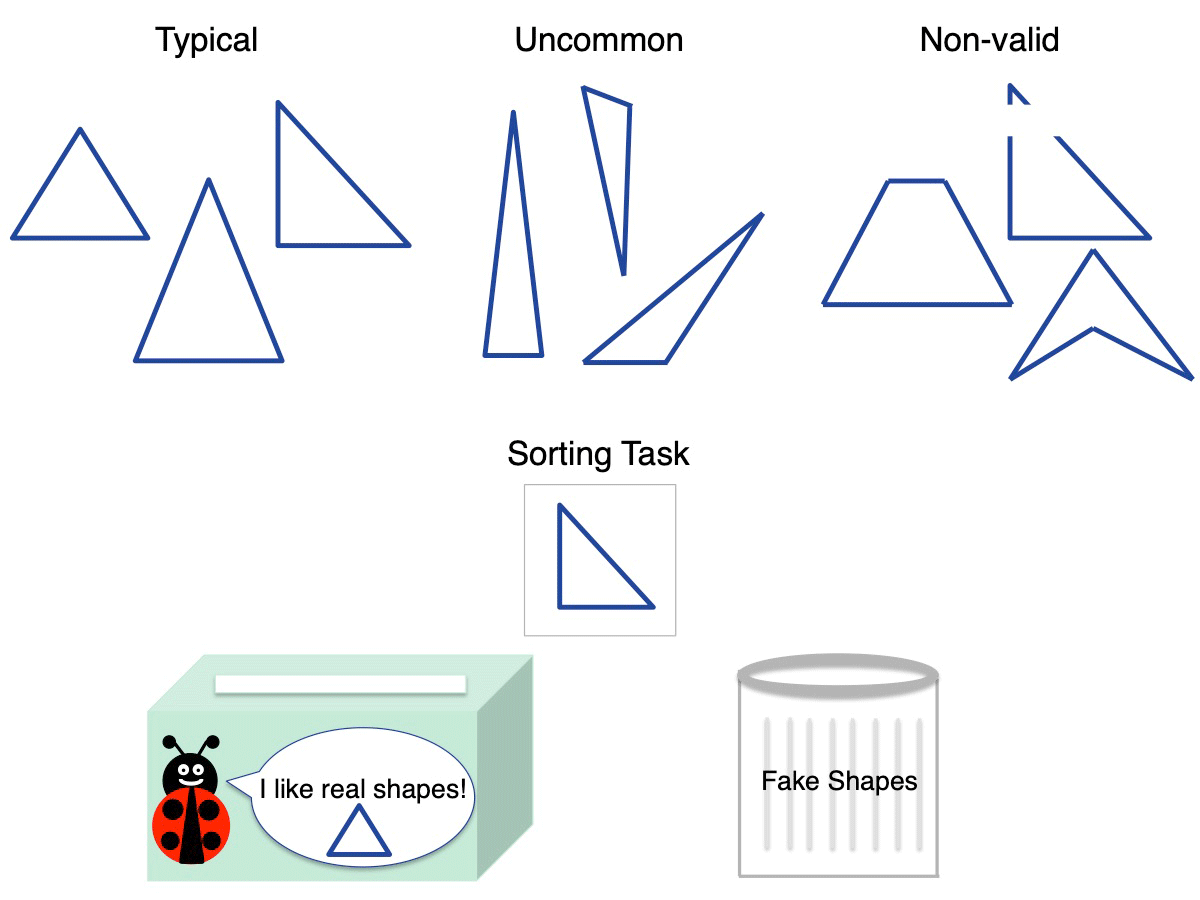
Children had the opportunity to explore shapes in one of three ways.
In the guided play group, an adult taught children about the properties of shapes in a playful way that invited their participation. Children wore a detective hat as they helped figure out each shape’s “secret” or special features. The adult told the child that all the shapes were “real” shapes, even though they looked different. The adult asked questions and encouraged children to touch and trace the shapes.
A second group of children learned through didactic instruction. The adult talked about the shapes in a similar manner as before. But this time children did not participate. They only watched and listened.
Children in the free play group received no instructions. The adult gave them the materials to play with on their own.
Next, all children completed a shape-sorting task with typical, uncommon, and non-valid shapes. Non-valid shapes were either broken or did not have the correct number of sides. Their task was to put the “real” (typical and uncommon) shapes into a box and “fake” (non-valid) shapes into a trashcan.
Children in the guided play group were more accurate at sorting the real and fake shapes compared to children in the other groups. They even sorted uncommon shapes they had never seen at a rate 30% higher than the free play or direct instruction groups.
Guided play encourages children to explore materials. It helps them reason about what they see and do, be flexible thinkers, and try out new ideas. It’s also a great way to teach specific math concepts in a playful way!
-
- Free play
- is spontaneous, unstructured play that is child-directed
- Guided play
- is like free play, in that it's focused on what the child is interested in. But unlike free play, an adult facilitates a playful learning experience